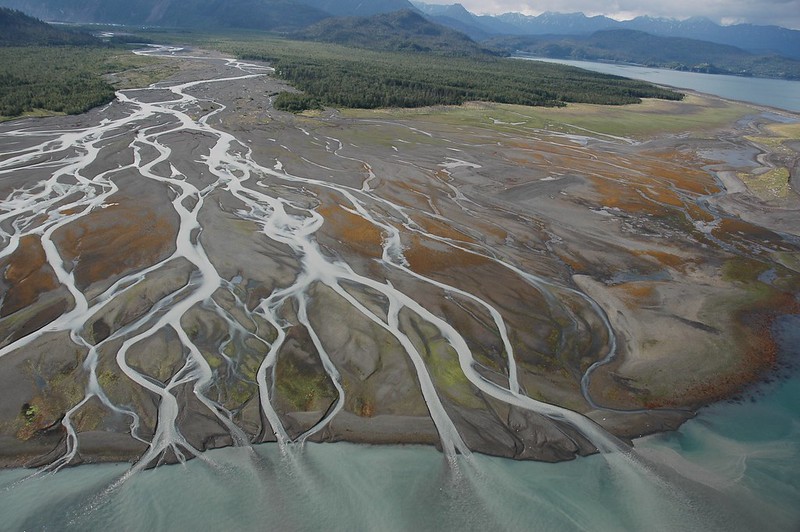Roadmap for Answer Writing 1. Introduction Briefly introduce metamorphism: A geological process in which existing rocks (protoliths) undergo physical and chemical changes due to changes in temperature, pressure, and chemical conditions, resulting in the formation of metamorphic rocks. 2. Factors Influencing Metamorphism Break down ...
Model Answer Impact on Regional Climate Obstruction of Cold Air: The Himalayas act as a barrier preventing the cold continental air from the north from entering India during winter. This helps maintain relatively milder winter temperatures across the Indian subcontinent. Moisture Barrier: The mountaRead more
Model Answer
Impact on Regional Climate
- Obstruction of Cold Air: The Himalayas act as a barrier preventing the cold continental air from the north from entering India during winter. This helps maintain relatively milder winter temperatures across the Indian subcontinent.
- Moisture Barrier: The mountain range forces southwest monsoon winds to release much of their moisture before crossing northward, resulting in heavy rainfall on the southern slopes of the Himalayas. This is crucial for precipitation in India, Nepal, and Bangladesh.
- Rain Shadow Effect: The high altitude of the Himalayas causes a dry region on the leeward side, leading to the arid conditions of the Gobi Desert and the Tibetan Plateau, where precipitation is scarce.
Impact on Local Ecosystems
- Provisioning Services
- Water Supply: Glaciers in the Himalayas feed major rivers like the Indus, Ganga, and Yamuna, providing essential water resources to millions of people downstream.
- Food Production: The alluvial soil deposited by these rivers in the Great Plains supports rich agricultural productivity.
- Medicinal Plants: The region is home to a variety of medicinal plants, which are vital to traditional medical systems and the livelihoods of people in the subcontinent.
- Regulating Services
- Pollination: The Himalayas support a wide range of pollinators, such as insects and birds, that play an essential role in maintaining ecosystem health and agricultural productivity.
- Water Regulation: The lakes and rivers of the Himalayas help regulate surface and groundwater, contributing to natural purification and flood control.
- Supporting Services
- Diverse Ecosystems: The range of elevations and climatic zones in the Himalayas supports diverse ecosystems, including alpine meadows, temperate forests, and subtropical jungles, which are crucial for nutrient recycling and soil respiration.
- Cultural Services
- Recreation and Tourism: The scenic beauty of the Himalayas and their status as conservation areas attract tourists, promoting cultural and eco-tourism.
- Cultural Heritage: The Himalayas hold significant cultural importance for many religions, including Hinduism, Buddhism, Jainism, and Sikhism, serving as a place of pilgrimage.
Conclusion
The Himalayan region is essential not only for its climatic role but also for its biodiversity and ecosystem services. However, climate change is threatening these ecosystems, with potential consequences for biodiversity and the livelihoods of millions in the region. Concerted global and regional efforts are needed to mitigate these impacts.
See less


Model Answer Metamorphism is the process through which rocks undergo changes in mineral composition, texture, and structure due to various factors: Heat: Elevated temperatures, often resulting from the Earth’s internal heat or proximity to molten magma, cause minerals to recrystallize. Heat drives mRead more
Model Answer
Metamorphism is the process through which rocks undergo changes in mineral composition, texture, and structure due to various factors:
Significance of Metamorphic Rocks
Metamorphic rocks play a crucial role in understanding Earth’s geology and have significant economic and industrial value:
- Geological Significance:
- Geological History: Metamorphic rocks provide insights into past tectonic events, helping geologists reconstruct Earth’s history.
- Tectonic Processes: These rocks are often formed at plate boundaries, aiding the study of plate tectonics.
- Climate History: Some metamorphic rocks, like eclogite, can indicate past climate conditions.
- Economic Significance:
- Mineral Resources: Metamorphic rocks like talc schist and graphite schist are sources of valuable minerals.
- Construction Materials: Rocks like gneiss, quartzite, and marble are used in building and infrastructure.
- Industrial Uses: Graphite is used in high-temperature applications, and quartzite is vital for glass manufacturing.
- Beauty Aids: Steatite (talc) is used in products like talcum powder.
See less